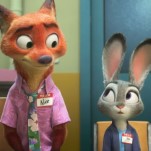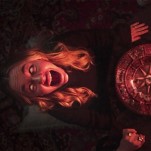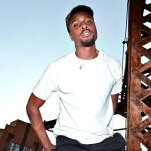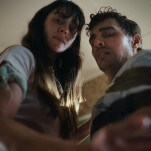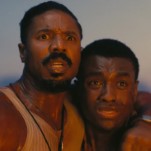The LEGO Ninjago Movie

The LEGO Ninjago Movie is exactly what you’d expect from the Lego film franchise, and that’s the best and worst thing about it. Good, in the sense that Lego has set up a reliable assembly line of cinematic experiences. Even the worst movie in the blockchain will still be watchable. Bad, because Ninjago is that movie. In a Lego universe consisting of three feature films, Ninjago’s the bottom of the franchise.
The outrageous Lord Garmadon (Justin Theroux) attacks the Asian-inspired city of Ninjago, which is also the name of a movie you may have heard of, named Ninjago. Every day, Garmadon tries to conquer Ninjago (the city). Garmadon is opposed by a team of ninjas, who drive mechs and protect Ninjago (the city). The mentor of the ninja team is Master Wu (Jackie Chan), Garmadon’s brother.
Little does Garmadon know, the ninja team is secretly a group of high school friends—the leader, the nervous one, the fire one, the obvious robot pretending to be human, the girl, and the DJ. Later, in the second act, the team will discover they possess incredible, elemental powers, and yes, I’m aware every line I type could have been ripped from the begrimed back cover of a 1991 VHS sleeve. Bear with me, for we do nothing petty when we speak of Ninjago.
The leader of the team is the creatively named Green Ninja, who is actually teenager Lloyd Garmadon, son of Lord Garmadon. The two are estranged. Garmadon is a full-time conqueror and a real half-assed father. So: Lego Vader and Lego Luke. Garmadon doesn’t know that Lloyd is the Green Ninja. Got that relationship in mind? Good. That’s the emotional crux of the entire movie.
Green Ninja is beloved. But, twist! Everyone in the city knows that Lloyd is Garmadon’s kid. Drape the Spider-man and Peter Parker dynamic over Vader and Luke. That’s where we are.
-

-

-

-

-

-

-

-

-

-

-

-

-

-

-

-

-

-

-

-

-

-

-

-

-

-

-

-

-

-

-

-

-

-

-

-

-

-

-

-


